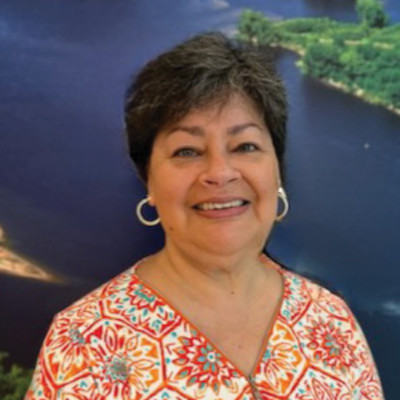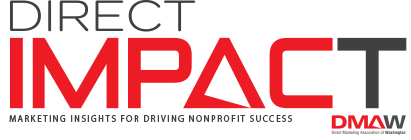
May/June 2025 • Vol. 63 No. 3
Articles
Columns
Featured Event
The Power of Individual Giving: 5 Tips to Help Your Organization Move Forward in Hard Times
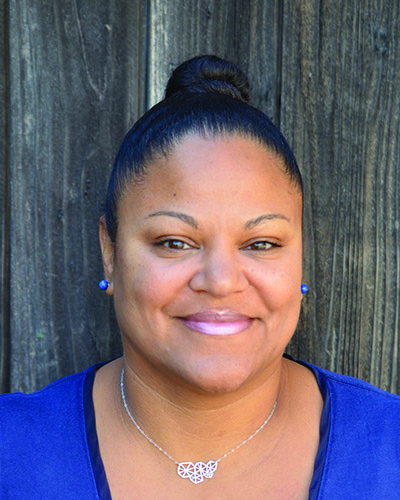
2025 has brought challenges to the nonprofit industry unlike any time before. Yet using words like "unprecedented" or "unparalleled" fail to accurately illustrate the catastrophic real-life effects that the federal funding freezes have had on nonprofits, their programmatic work, their staff and the hundreds of millions of people around the world who are beneficiaries of their life-changing work.
While not every nonprofit receives government funding, the effect on those that do - and their ability to do their work - will reverberate across our industry in ways that we may not truly understand now. And deep national budget cuts, mass firings and the related economic fallout will have an immense impact on the generous individuals who contribute to nonprofit causes.
These are real issues - and ones that should not be discounted or minimized. This is exactly the time when we have to remember the power of individual donor fundraising.
To be clear, the federal funding approved and appropriated by Congress should be fully reinstated for the U.S. Agency for International Development (USAID), as well as all grants and loan programs. Not only do they provide essential support, but recent surveys have also shown that the majority of the U.S. population supports these programs and believes nonprofits are essential to the country. Yet, at the time of writing this, there was no clear end in sight for a full reinstatement or resolution.
Nonprofits and their beneficiaries can't wait until all legal challenges have been resolved. We have to move forward to keep nonprofit funding sources as strong as possible, and work to increase fundraising revenue where and when we can.
Right now, the only constant is change, and the ability for us to make plans to move forward is difficult. Aside from continuing to collectively stand up against these attacks on our industry, there are things we can focus on. Here are ideas for fundraising in challenges times - regardless of how you may be impacted. I know we're all working on innovative solutions to react to the issues that continue to arise each day.
Nonprofits and their beneficiaries can't wait until all legal challenges have been resolved. We have to move forward to keep nonprofit funding sources as strong as possible, and work to increase fundraising revenue where and when we can
1. Elevate Donor Relationships
Donors are partners with nonprofits, program staff and their constituents in delivering on programmatic missions and deserve honest, transparent information - even when it's difficult. Now is the time to consider pulling donors closer into your mission, maybe even engaging them in volunteering, personal visits or other non-financial ways.
2. Reevaluate Prospective Audiences
The nonprofit industry has relied on a small section of the U.S. population for direct response marketing, yet we know that all communities are philanthropic, and donations are made through many different means and channels. While it seems counterintuitive to invest in audience exploration right now, for those that do, the benefit could be immense for current and future revenue.
3. Keep Testing New (and Old) Tactics
While we all should be testing things like new digital payment methods and cross-channel targeting, don't forget about those old tried-and-true tactics that might be appropriate for where your organization is right now - telemarketing, mobile and canvassing remain mainstays of many successful fundraising programs.
4. Care Less About Direct Attribution
We continue to encourage donors to give where they want, when they want. Yet, we continue to measure results by channel or effort. While it's awesome to know the result of a certain fundraising effort, that's short-sighted considering current donor behavior. Expand your analytics to audience performance reporting. Right now, we should be focusing on overall revenue.
5. Focus on the Most Profitable Engagements
Regardless of how many people are giving, getting more donors into recurring giving relationships will help build a reliable base of support that can help you weather periods of downturn. And right now, activating major gift solicitations may be the quickest means to generate immediate revenue.
Don't shy away from planned and asset gift promotion. Every organization should be investing in multichannel legacy giving promotion no matter the size or budget. And while a large legacy gift could be game changing, gifts from donor-advised funds and qualified charitable distributions have been an increasing flow of revenue for nonprofits - especially for those that are specifically asking! People who want to do more for an organization will do more in any way they can, and, for some donors, that's through a planned gift.
It feels silly to say, "Be nimble." Maybe it should be, "Let's keep doing what we've been doing." We've all been adjusting to major shifts from the pandemic boom, inflation and the contraction of giving. But the year ahead will continue to test our ability to pivot and adjust.
According to the 2024 Giving USA report, donors made up 77% - more than $417 billion - of annual charitable giving in the U.S. The power of individual giving cannot be underestimated, especially during these times. That said, for those organizations that are hardest hit, it's naive to assume that an increase in the annual giving program or the major gifts program can make up the gap of what might be millions or even billions of dollars. But faced with limited alternatives, that's what many will have to do.
I would like to honor those who have recently lost their jobs, been furloughed or lost life-saving services. Our industry was founded to support needs in our society that were not being met. Individuals stepped up to fund much of that work. We are all inherently charitable, and collectively, we can and will fight back to protect what has been built over hundreds of years.
Finally, I'm immensely proud to be a part of this industry, especially in these hard times.
Mwosi Swenson is president and CEO of Mal Warwick Donordigital, an integrated direct response fundraising firm serving nonprofits. She can be reached at mswenson@mwdagency.com.
PRESIDENT'S PERSPECTIVE
Celebrating 70 Years: Innovating Connections, Inspiring Change
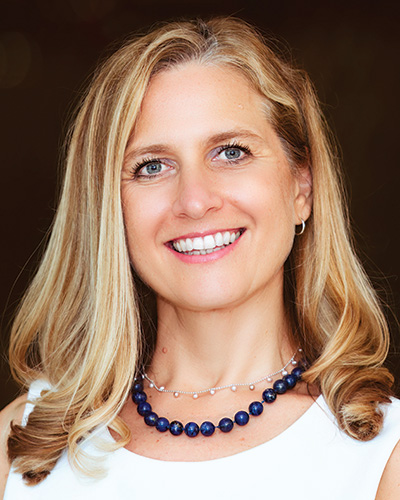
I grew up in rural New Jersey (Yes, that is a thing) in what they now call "The Highlands" - dirt roads, mucky lakes and mosquitos.
Summers meant freedom, playing dibs off of the dock at Lake Rickabear (cheaters buried the popsicle stick in the muck), drinking from the garden hose (cliché but true) and eating green beans directly from the garden (so fresh). Summers were for exploring, pushing boundaries, and a family vacation if you were lucky.
Summers for direct response practitioners like us are a little different though. If I were to guess, you are finalizing direct mail acquisition plans for September, thinking about lead generation strategies for your email file or maybe ending/starting your fiscal year. In other words, you are busy, especially if you are juggling kids' summer camps too.
Regardless of which channel(s) you are touching, whether you've got more (or less) budget to work with or if you need some inspiration to support fall planning, you'll find some valuable tips, perspectives and strategies in this issue of Direct Impact to ensure your work finds success.
Be sure to check out our cover story from Mwosi Swenson, president and CEO at Mal Warwick Donordigital. She talks about the power of individual giving and navigating the challenging space nonprofits occupy in 2025.
And, I admit I am biased, but you need to read the article from my colleague August Seibs on email spam traps and how to avoid them. A good read at any time of the year, this article is especially important as you plan your fall campaigns.
My first fundraising job was in telemarketing, so I also encourage you not to miss the article from Gavin Caster, account executive at Telefund, who shares a great case study on the power of the phone in your fundraising program.
In between devouring another great issue of Direct Impact, I do hope you find time to rest, recharge and explore this summer. Hopefully you have a vacation planned - with family, friends or solo. But I also hope you've left time to attend the (20th!) annual
Bridge to Integrated Marketing & Fundraising Conference happening July 30 - Aug. 1. I'll be there. Drop me a line and let's grab coffee. You can tell me about your summer plans!
Karin Kirchoff
President, K2D Strategies
kkirchoff@k2dstrategies.com
Committee Spotlight
Get to know the people behind the scenes powering our industry's top events and programs, and how you too can get involved.
The MAXI Awards Are Evolving: And It's Time to Get Involved
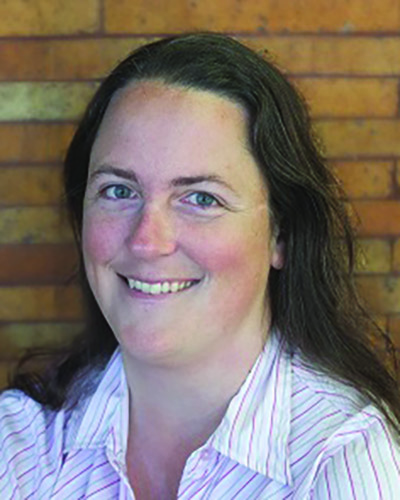
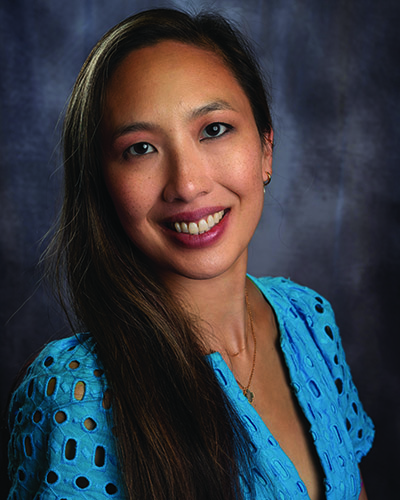
The Marketing Awards for eXcellence and Innovation (MAXIs) have long been the gold standard in recognizing excellence in direct response marketing.
Year after year, the MAXIs have highlighted the industry's best campaigns - those that blend smart strategy, strong results and innovative thinking. But in 2025, the MAXI Committee is shaking things up in a big way.
This year, in addition to our traditional Gold, Silver and Bronze MAXI Awards - where performance metrics like return on investment, response rate and conversions still reign supreme - we're thrilled to introduce three brand-new Creative Awards.
These categories are designed to celebrate the bold, brilliant ideas that make marketing memorable and where inspired, creative execution is the star of the show.
The new awards include:
- The Stamp of Excellence Award which honors standout direct mail creative.
- The Digital Dynamo Award which recognizes bold and effective digital creative.
- The Omni-WOW Award which celebrates next-level multichannel innovation.
These awards still value strategy and results, but they are weighted more heavily toward creative brilliance, giving room for bold, out-of-the-box ideas to shine - even if the numbers weren't off the charts.
The MAXI Committee, a team of dedicated industry professionals and volunteers, heard the feedback loud and clear: While results matter (and always will), there's a desire to elevate and recognize visionary creative work. The new Creative Awards are our answer to that. They're about inspiration, imagination and the kind of thinking that pushes the entire industry forward.
This year, we saw a record number of submissions! A huge thank you to everyone who submitted, collaborated and championed your campaigns.
Mark your calendars for Friday, Oct. 3, 2025! This year, the MAXI Awards ceremony is moving to a special luncheon format - a lively mid-day celebration of innovation in marketing and fundraising. Join us to explore award-winning campaigns, connect with the talented professionals behind them, and vote for your favorite finalists in our exciting new award categories. It's an event you won't want to miss!
Leigh Corrigan-Owens serves as the creative director at Mal Warwick Donordigital. She has a passion for social justice causes and decades of experience partnering with non-profit organizations to develop award-winning fundraising campaigns and grow their direct response programs.
Jade Nguyen Swanson is a seasoned professional in developing campaign strategies with more than 15 years of nonprofit experience. Her success in constructing and optimizing the donor journey - from brand awareness to lead acquisition,
donor conversion, cultivation and retention programs - continues to fuel her drive to keep up with the latest platforms and services.
Best Practices for Spam Traps and Domain Monitoring

Planning strategy, writing copy and designing creative are all important parts of successful email campaigns - but none of that matters if your organization's domain health isn't in good shape. Taking steps to protect it should always be a top priority.
Among the various reasons to prioritize your domain's health - such as regulatory compliance, service performance and brand reputation - addressing security threats is of utmost urgency for organizations.
In February of 2024, email service providers, notably Gmail and Yahoo, took steps to tighten up their security and spam monitoring practices. On the user side, this meannt less spam and phishing, but, on the email marketer side, this meant more hurdles to jump through to ensure that emails aren't landing in the spam folder.
Spam Traps
One thing that has become common is email service providers' use of spam traps. These are emails that providers have created to monitor whether marketers are following email best practices. Some have been created and strategically placed on websites to see where the emails end up. Others are old and abandoned emails that have been recycled into a sort of undercover spy in your email list.
Fans of spy novels - or those who've heard of the medical procedure - might have heard of the barium swallow tactic, where a piece of information is given to only one person in order to see if they are a mole. Similarly, these spam trap email addresses that end up on your list tell email service providers that you may not be following best practices, and a large number of them could show them its time to downgrade your domain status.
Identify and Remove Spammers
Email marketing inherently means we need to walk a tightrope between best practices and ensuring communications can reach a wide audience. This means that marketers are never perfect with their practices, and spam traps are likely to end up on lists now and again. The key is to ensure this doesn't happen to the point email service providers flag you as a spammer or downrate your domain in their system.

Email marketing inherently means we need to walk a tightrope between best practices and ensuring communications can reach a wide audience.
The key ways to do this are:
Collect emails responsibly. While it can be tempting to double your list overnight with a list buy, these lists often can have spam traps in them. When bulk adding new emails it can be helpful to run them through a service that can flag bad emails.
Email only new and active emails. Create a suppression based on opens, clicks or another actionable criterion that eliminates emails that aren't engaging with the content.
Monitor key performance indicators and list health. Best practices are:
- Periodically scrub lists for domains with typos (ex: "gmal.com" instead of "gmail.com").
- Monitor metrics.
- Keep spam complaint rates under 0.1%.
- Maintain bounce rates under 2%.
- Sustain open rates above 5% (ideally way higher).
- Monitor email domain health.
Domain health and email marketing need constant care and management, and many of these practices will help marketing efforts outside of mitigating spam traps. A continually changing landscape with new rules and algorithms being created by email service providers means we need to constantly be vigilant and make sure monitoring the technical things has a place right next to copy and strategy.
August Siebs is an account director at K2D Strategies where he blends data-driven strategies with creative storytelling to drive impactful campaigns across direct mail and digital channels. His work for nonprofits has vast audiences, increasing membership and revenue. August can be reached at
asiebs@k2dstrategies.com.
70 Years of Being Direct: DMAW from Mail to Multi-Channel
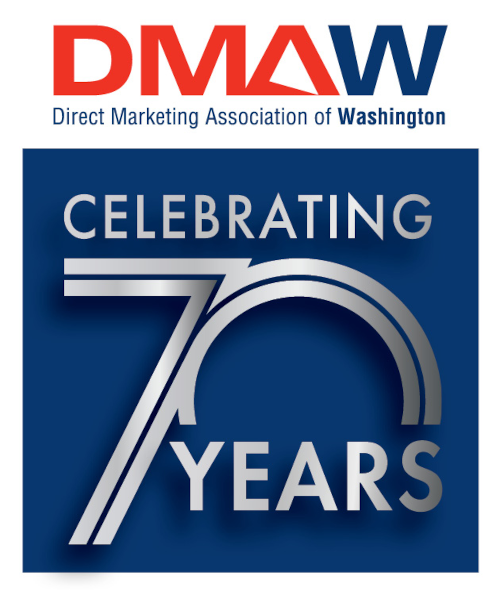
The story of the Direct Marketing Association of Washington (DMAW) is deeply intertwined with the history of direct response marketing itself. In the 1950s, as direct marketing was still in its infancy, businesses, nonprofits and political campaigns turned to direct mail as a way to reach consumers. Direct mail was one of the few measurable forms of advertising at the time, and it would go on to transform the way organizations engaged with their audiences.
In this post-war era, a group of forward-thinking professionals recognized the need for collaboration, innovation and education in this emerging field. In 1955, this led to the founding of The Mail Club of Washington - a small group of industry professionals local to the Washington, D.C., metropolitan area. They gathered over lunch to exchange ideas, build best practices and explore new ways to leverage direct mail and mail-order catalogs.
By 1973, the group had grown and would eventually evolve into the Direct Marketing Club of Washington and, later, become the Direct Marketing Association of Washington (DMAW) in 1993, reflecting its professional, career-driven focus.
Through the years, DMAW was at the forefront, supporting members with networking and emerging strategies, always staying on the cutting edge of marketing trends. Here's a brief look at DMAW and direct marketing over the past 70 years.
The Rise of Direct Mail Efficiency
The early days were marked by a dedication to advancing the practice of direct mail. At the time, the process was labor-intensive and expensive - each piece of mail was handled individually by the postal system.
The U.S. Postal Service introduced ZIP codes in 1963, ZIP+4 codes in 1983 and barcoding in the 1980s to significantly improve mail sorting and delivery accuracy. By the late-1990s, the U.S. Postal Service and private mail processors began commingling, allowing multiple mailers to consolidate their shipments and benefit from greater postage discounts. This newfound efficiency proved essential for both large and small organizations, making direct mail more cost-effective and accessible.

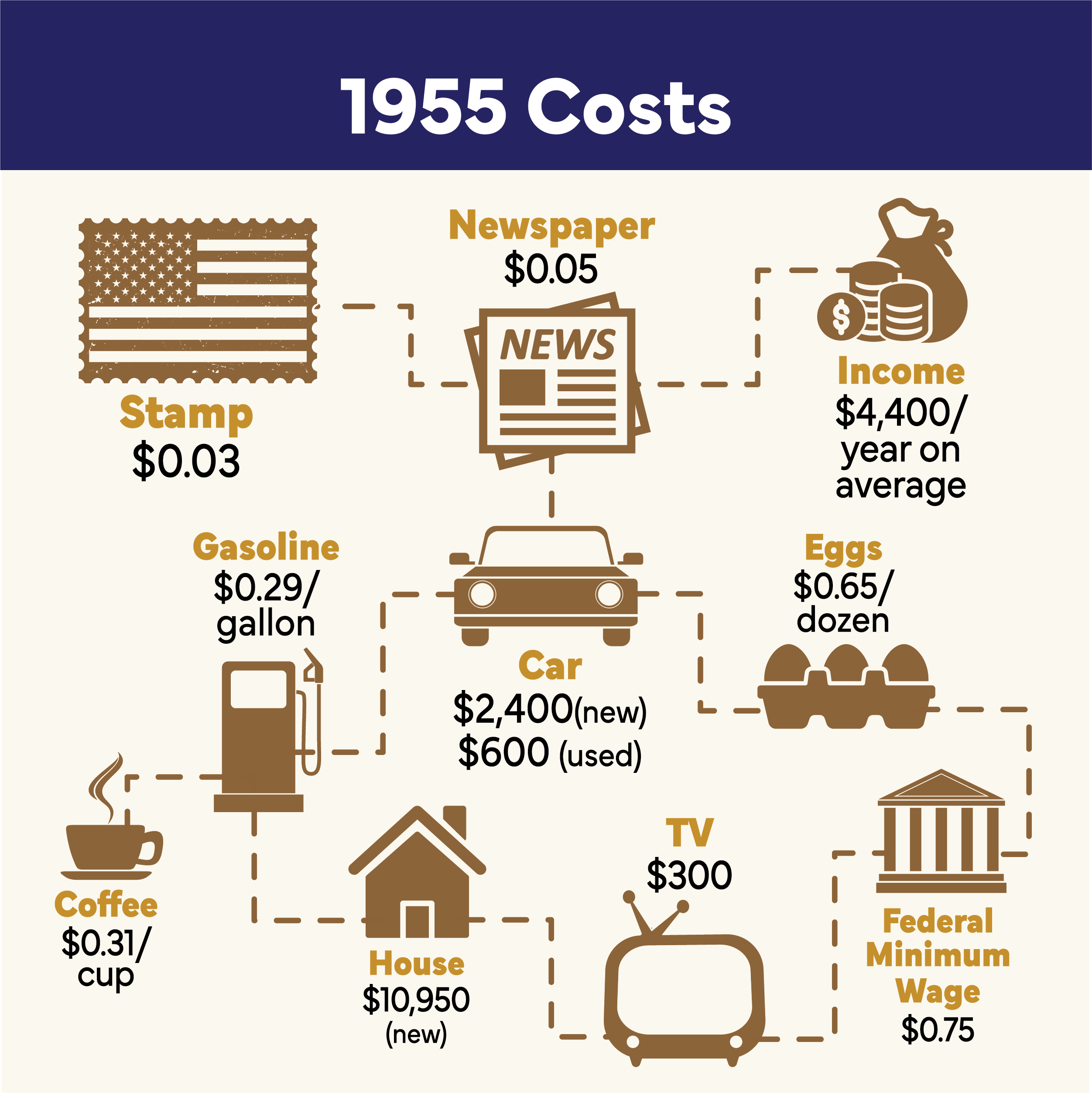
In this post-war era, a group of forward-thinking professionals recognized the need for collaboration, innovation and education in this emerging field. In 1955, this led to the founding of The Mail Club of Washington.
The Addition of New Marketing Channels
The 1980s and 1990s welcomed new channels like telemarketing, direct response television (DRTV) and 800-number campaigns.
As digital tools and data-driven marketing strategies began to take center stage in the 2000s, DMAW championed the responsible use of data, ensuring that ethical standards, transparency and consumer rights remain central to the industry's evolution.
A prime example of DMAW's commitment to advancing direct marketing practices is the List Bazaar, an annual event for nearly 30 years that focuses on list usage and data-driven strategies.
The Digital Revolution and DMAW's Evolution
By the early 2000s, the digital revolution was reshaping the direct response marketing landscape. Email, online fundraising and social media-driven campaigns began to rise, while analytics and data segmentation became more advanced. Tools like Google AdWords and Facebook Ads enabled hyper-targeted campaigns, and email segmentation and automation became standard practices.
By the 2010s, email had become a cornerstone of direct response marketing, supplemented by digital ads, social media and SMS marketing. While direct mail remains strong (and is still the best acquisition tool), it supports the digital channels which have become indispensable for response-driven campaigns.
In 2018, the DMAW decided to focus more on the nonprofit sector, reflecting its growing importance in the direct marketing industry.
Collaboration as Part of the Evolution
In 2006, DMAW deepened its focus on the nonprofit sector by partnering with the Association of Fundraising Professionals Washington, D.C., Chapter to launch the first-ever Bridge to Integrated Marketing & Fundraising Conference for 600 attendees. By 2025, the event is expected to attract more than 3,000 nonprofit marketers and fundraisers, including international participants.
In 2023, the DMAW also collaborated with The Nonprofit Alliance (TNPA) to co-produce the Nonprofit Fundraisers Symposium.
A Legacy of Education, Networking and Advocacy
Through it all, DMAW has remained dedicated to its founding principles of education, networking, and advocacy. The organization continues to offer unparalleled opportunities for professional development, ensuring that its members have the tools and knowledge they need to succeed and stay ahead of the curve in an ever-evolving marketing landscape. From its humble beginnings as a small regional gathering of direct mail professionals to its current status as a leading force in nonprofit fundraising and marketing nationwide, DMAW's legacy is one of innovation, collaboration and forward-thinking leadership.
As we celebrate 70 years of DMAW, we look toward the future of direct response marketing, ready to face any and all challenges. With AI, data-driven personalization and new digital platforms shaping the way marketers engage with their audiences, DMAW will continue to lead the way in educating and supporting professionals in the field. From the early days of direct mail to the dynamic integration of digital strategies, DMAW's commitment to excellence and its members' success remains as strong as ever.
Donna Tschiffely is the executive director of DMAW. Reach her at donna@dmaw.org.
Nonprofit Fundraisers Symposium: Lessons, Insights and a Few Surprises
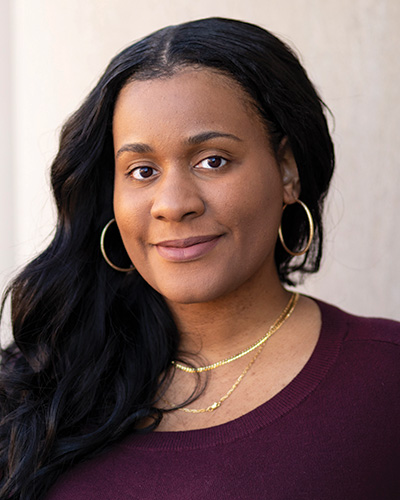
Attending the Nonprofit Fundraisers Symposium in March in Washington, D.C., was an eye-opening experience. With more than 300 nonprofit professionals gathered under the theme "Possibilities. Partnerships. Progress." the energy in the room was palpable. This wasn't just another conference - it was a dynamic exchange of ideas, challenges and innovations shaping the future of fundraising.
Brand Loyalty: The Secret Sauce for Nonprofits
The symposium kicked off with a keynote by Dr. Americus Reed, a powerhouse speaker and expert in brand identity at The Wharton School. He didn't just talk at us - he had us engaged, catching every insight he threw our way.
His key message? Nonprofits must cultivate deep emotional connections with donors.
Did you catch that? People support causes they feel personally invested in, and that means building brand loyalty through authentic storytelling. If we want donors to move from casual supporters to lifelong advocates, we need to ensure they see themselves as part of our mission.
People support causes they feel personally invested in, and that means building brand loyalty through authentic storytelling.
The Science of Neuro-Fundraising: A Game Changer
One of the sessions that truly fascinated me was "Better Testing Meets Better Results: The Science of Neuro-Fundraising." Steve Agauas from Moore, and Becky Johnson from the American Heart Association, took us on a deep dive into how neuroscience can shape and enhance fundraising strategies. The nonprofit used neuroscience-based research to analyze how donors react to visual stimuli, leading to more effective messaging and testing strategies.
A key insight? Many donors still don't fully understand where their contributions go or the specific impact their gifts make. How many times have we all struggled to clearly communicate impact?
The American Heart Association leveraged these findings to refine its direct response television (DRTV) campaigns, ensuring donor messaging aligned with emotional triggers that drive giving. Definitely something to consider as we rethink our own fundraising campaigns!
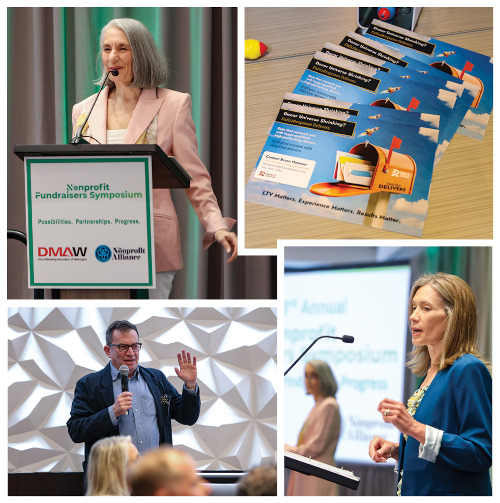
Facing the Hard Truth: Model Data Bias in Fundraising
The session "Model Data Bias: The Inconvenient Truth About How It's Impacting Donor Files and What It Means for the Future of Fundraising" was a reality check. Roger Hiyama from Wiland and his panel didn't sugarcoat the fact that traditional donor models are shrinking our prospect pools. The increasing reliance on the same donor profiles and metrics means we're missing out on untapped audiences.
The panel's advice? Nonprofits must be willing to test non-traditional models, even if it requires an initial investment with no guaranteed immediate returns. Yes, it's a tough sell to leadership, especially with budgets tightening, but the alternative - sticking with the status quo - simply isn't sustainable.
This session pushed me to rethink how we diversify our donor base and challenge the norms of acquisition strategies. Roger, you convinced me! Now let's see if I can sell this to my chief financial officer. Wish me luck!
Building Donor-Centric Programs: More Than Just a Buzzword
In "The Leader's Role in Building Donor-Centric Programs Across Departments" Defenders of Wildlife and Project HOPE shared how they revamped their internal structures to align fundraising, communications and programmatic teams. The result? More cohesive donor experiences and engagement strategies.
It sounds simple, but, as many of us know, departmental silos are a real challenge (even inter-departmental ones). Seeing how these organizations successfully broke down barriers to prioritize donor relationships was inspiring. While replicating this exact model may be difficult, the idea of fostering transparency and collaboration across teams is something I'm eager to explore further.
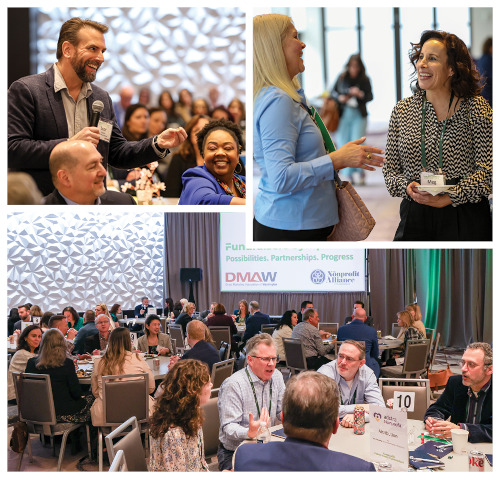
Beyond the Mailbox: Expanding Acquisition Channels
Many of us are feeling the pressure of declining direct mail acquisition response rates and rising costs. The session "Beyond the Mailbox: Embracing New Channels to Combat the Challenging Acquisition Environment" addressed this head-on. With DRTV, connected TV (CTV), SMS and MMS emerging as viable acquisition tools, nonprofits can no longer afford to rely solely on traditional direct mail strategies.
One tactic that caught my attention was using CTV alongside direct mail acquisition, similar to how display ads are used to reinforce messaging. The key takeaway? Diversification is no longer optional - it's essential for growth.
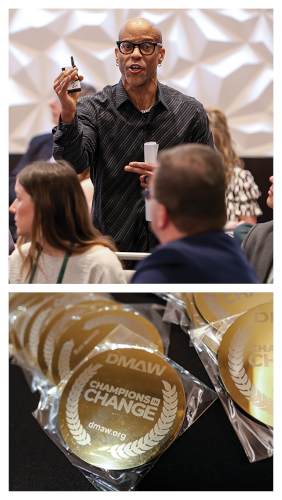
Why This Symposium Mattered
This was my first time attending the Nonprofit Fundraisers Symposium, and it exceeded my expectations. Beyond the invaluable sessions, the real magic was in the conversations with peers - sharing struggles, exchanging ideas and finding inspiration in each other's successes.
If there's one thing I walked away with, it's this: The nonprofit sector is evolving rapidly, and those willing to innovate, collaborate and challenge the status quo will be the ones who thrive. I left the symposium, not just with new strategies, but with a renewed sense of purpose and excitement for what's ahead.
Zakeia Rodgers is the direct marketing manager at the Animal Legal Defense Fund and a member of DMAW's board of directors. With nearly a decade of experience in nonprofit direct marketing, she specializes in both digital and direct mail fundraising. Based in Maryland, Zakeia has been actively involved with DMAW for four years, particularly through the Young Professionals Advisory Council, where she helps connect and guide young, aspiring industry leaders. She can be reached at zrodgers@aldf.org or on LinkedIn.

Our industry's next generation of leaders are already making an impact! Learn more and join them at dmaw.org/ydmaw.
Smart Fundraisers Don't Start From Scratch

There are so many options when it comes to engaging your current donors and finding new ones. It can be hard to know what will be most effective, especially when budget constraints are layered in and the return on investment is considered.
For campaigns to engage previous donors, you must be conscious of the looming threat of "habituation," defined in psychology as the process of becoming less and less responsive to a stimulus after repeated exposure. This threat also exists in direct mail acquisition for organizations that rely on a single control package.
Telemarketing or phone fundraising can help address these issues because human-to-human interaction is powerful and not to be taken for granted. One thing that telemarketing and major donors have in common is that conversation motivates the decision to give.
A national nonprofit's retention report illustrates the power of human-to-human interaction via the lifetime value of sustainers acquired by the phone. Let's compare sustainers acquired by email and sustainers acquired by phone. The data available for telemarketing begins two years before email, and the lifetime value per sustainer acquired over the phone is $150 greater. The lifetime value of a sustainer acquired over text is lower than both, with data on that becoming available over 10 years after email or telemarketing.

One thing that telemarketing and major donors have in common is that conversation motivates the decision to give.
Once someone gives through the phone, they are more likely to be responsive to future telemarketing efforts - renew as acquired is just as true on the phones as it is in the mail!
Telemarketing isn't just for house file programs any more either. A recent case study from a different national nonprofit provides compelling evidence. Through strategic phone prospecting, the organization achieved a remarkable return on investment, with net acquisition costs ranging from a modest $2 to $25 per donor. Rigorous training of an in-house call staff deeply familiar with an organization's mission and knowledgeable enough to manage common objections helps address concern over the ethics of over-the-phone prospecting and brand reptutation. Furthermore, prospecting data lists can be tailored to a client's desire for a specific audience through segmentation. The price of acquisition only rises to $10 - or $40 if the cost of the list is included.
There are myriad options for how to both engage your donors and find new ones. The point to make is that a diverse set of options will drive retention overall, and that investing in channels with historical data might make it simpler to make a prediction on whether a new donor will give again.
Gavin Caster is the account executive of client outreach at Telefund.

DMAW EDUCATIONAL FOUNDATION
The Talent Pipeline: How You Can Support the Next Generation
In the fast-paced world of direct marketing - where we're always chasing the next campaign, test or trend - one thing remains constant: the need to invest in future talent. The next generation of marketers is not just important, they're essential.
As summer approaches, many students will begin internships and other immersive learning opportunities that help bring textbook concepts to life, just as the DMAW/EF programs aim to do.
The DMAW/EF mission is to help bridge the gap between the industry and the classroom. Many past student program participants have successfully entered direct marketing after participating in DMAW/EF programs, proving that experiential learning - and opportunities that introduce students to direct marketing - can illuminate a path that students may not have previously considered.
The best part about the DMAW/EF programs is seeing the students realize the possibilities of careers that are available. From their excitement as they present full, integrated marketing campaigns, to the valuable insight gained through one-day programs and conversations with industry professionals, it's an enriching experience. Even a single conversation or short program can have a lasting impact.
Supporting the next generation doesn't take much - just a willingness to connect, mentor and share your journey. These small moments of mentorship create ripple effects. When professionals give back, we not only shape individual careers, we shape the future of our field - a foundational idea for the DMAW/EF.
In a constantly evolving industry, building the talent pipeline isn't just good for students - it's essential for all of us. The future of marketing starts with the students we inspire today and DMAW/EF is here to support and connect the industry and the students.
 2025 DMAW/EF Online Auction!
2025 DMAW/EF Online Auction!
The 2025 DMAW/EF Auction will be held at the Bridge Conference in Oxon Hill, Maryland, this year. It will be an online auction that anyone can participate in. We look forward to seeing everyone in person and sharing more about the DMAW/EF - and also connecting with many of you online!
Have an item to donate or want to get involved with the DMAW/EF Auction? We are forming the committee and would love to have you! To donate, join the Auction committee or for more information, reach out to auction@dmawef.org.
MEMBER SPOTLIGHT
Careers are hardly ever linear - and that's certainly been Maria Fisher's experience. Fisher studied liberal arts at the Community College of the Air Force during her time in the U.S. Air Force. After four years there, she worked in a substance abuse rehabilitation unit in Texas.
From there, Fisher made a leap into the direct marketing world by joining The Nature Conservancy, where she has been for more than 30 years. She's held positions on several different teams during that time - such as member care specialist and assistant manager for retention - and now serves as campaign manager for membership.
"I really enjoy helping a donor find their way to philanthropy by linking it to their interests; it makes them feel good and invested in continuing to support that work," Fisher said. "Say a person might like to fish, or spend time at the beach, so why not let them know they can help protect the places they enjoy by supporting a nonprofit working in that space?"
Over the years, Fisher said that she's learned a lot about direct marketing from connecting with other leaders in the industry, and she advises newcomers to do the same.
"Always ask your questions, be willing to take on new tasks and avail yourself of all the learning opportunities out there," she said.
Where do you live?
My spouse, our dog Milo and I share a home in Fairfax, Virginia.
Who do you consider your mentors?
Primarily Morgan Dodd and Donna Cherel, but I've been fortunate to work with a lot of great people that were generous to share their knowledge, like David Whitehead, Mal Warwick, Keith Balderson and Jann Schultz.
What is the most helpful step you took to advance your direct marketing career?
Sometimes it's not a linear path. I zigzagged as opportunities came. I also availed myself of the learning opportunities whether through a vendor partner (Production Solutions 101) or the various associations I have been a part of, such as DMAW, DMFA or AFP. If you can help a colleague or volunteer for something, do!
QUICK TAKES
![]() Film: "Some Kind of Wonderful," "The Hunger Games," all the "Harry Potter" films, "The Lord of the Rings"
Film: "Some Kind of Wonderful," "The Hunger Games," all the "Harry Potter" films, "The Lord of the Rings"
![]() RESTAURANT:
RESTAURANT:
Most any steak place, but recently I tried Maple Avenue Restaurant with a friend and really enjoyed it.
![]() Music: I like all kinds of music, anything from '80s, progressive rock like Marillion, to country, pop, rock, even Lawrence Welk.
Music: I like all kinds of music, anything from '80s, progressive rock like Marillion, to country, pop, rock, even Lawrence Welk.
![]() Leisure Interests: I like to spend time with family, read and crochet.
Leisure Interests: I like to spend time with family, read and crochet.

Direct Impact is the member exclusive magazine from the DMAW.
Want to be featured in a future issue? Email your article ideas to comms@dmaw.org.


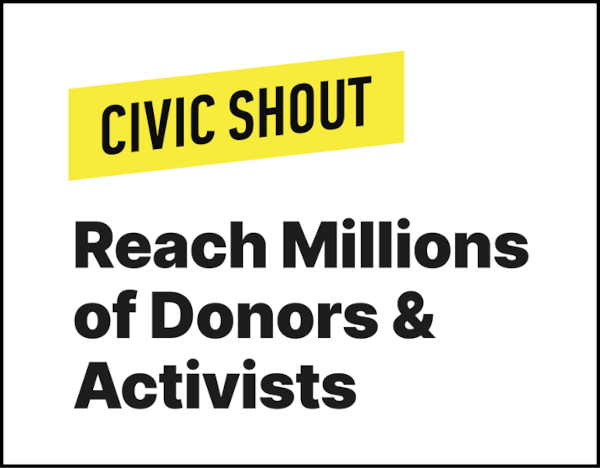

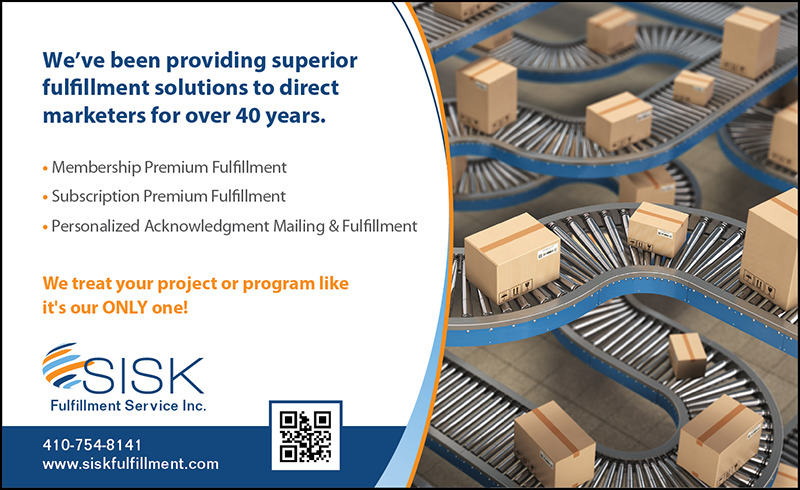
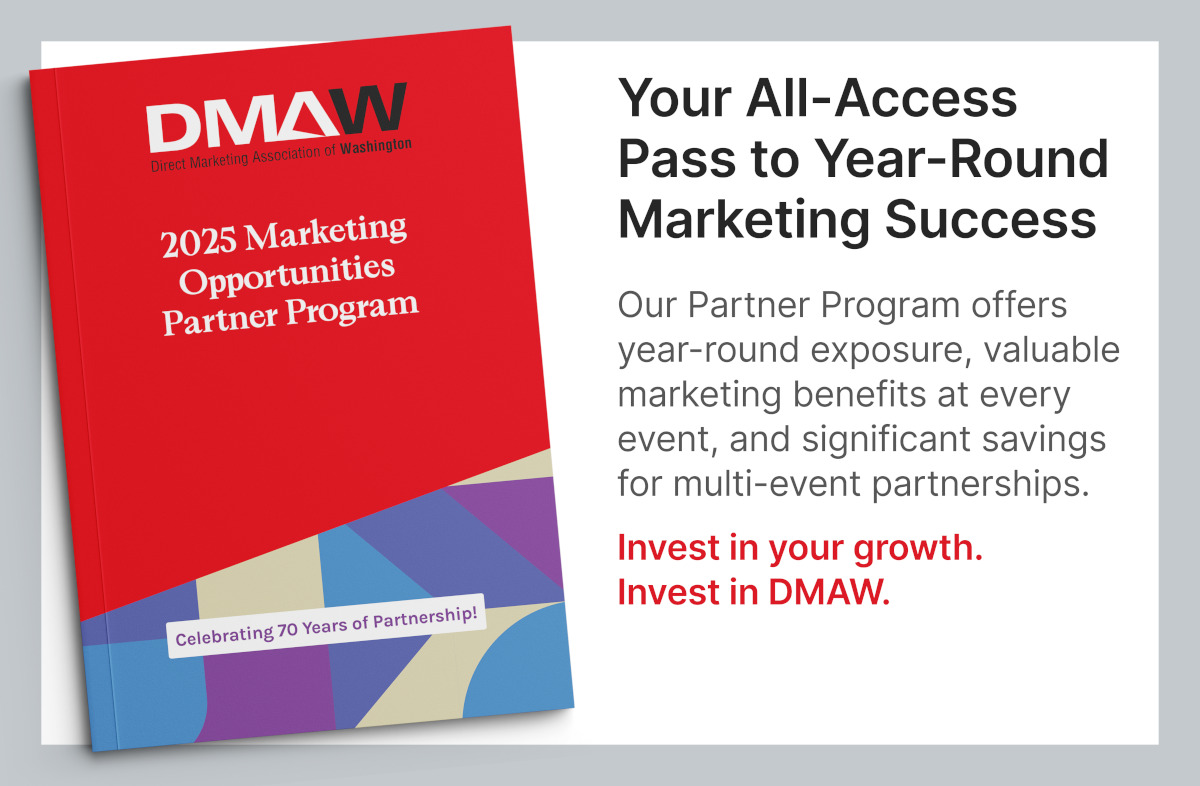
 2025 DMAW/EF Online Auction!
2025 DMAW/EF Online Auction!